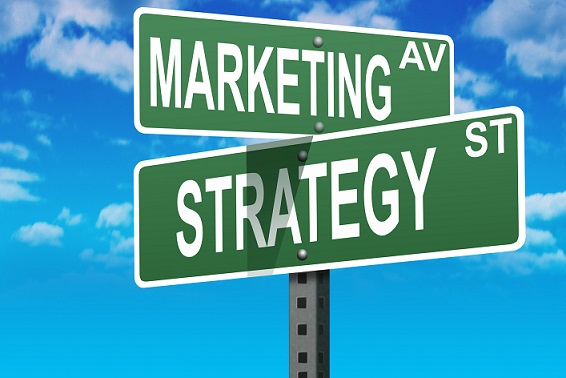There was £115.9 million invested by car dealers across the UK during 2016 alone on direct mail and online display campaigns, according to Google’s Car Purchasing UK Report which was published in April 2017.
Automotive manufacturers have a significant marketing budget available to them, but this cannot be said about every firm which is hoping to get a marketing campaign off the ground. As the interest in online platforms continues to increase, digital visibility often doesn’t come cheap either. Join Vindis, a Volkswagen dealership, as they investigate whether the return on investment will be worth the cost of setting up a marketing campaign in the first place…
The automotive sector
Within Google’s Drive To Decide Report, a document created in association with TNS, there was a discussion about how much more digitally savvy auto shoppers are now when compared to years gone by. It was found in this report that over 82% of the UK population aged 18 and over have access to the internet for personal reasons, 85% use smartphones and 65% choose a smartphone as their preferred device to access the internet. These figures show that for car dealers to keep their head in the game, a digital transition is vital.
This report also went on to reveal a study in which it was found that 90% of auto shoppers now carry out research online. 51% of buyers actually start their auto research online, with 41% of those using a search engine. To capture those shoppers beginning their research online, car dealers must think in terms of the customer’s micro moments of influence, which could include online display ads – one marketing method that currently occupies a significant proportion of car dealers’ marketing budgets.
Separate research from eMarketer suggests that 11% of the entire UK Digital Ad Spending Growth in 2017 was credited to the automotive industry. This places the industry in second position and trailing only that of the retail sector. What’s more, the automotive industry is forecast to see a further 9.5% increase in ad spending in 2018.
A dealership’s forecast remains the place where the majority of actual car purchases take place though. So, how is online influencing their decisions? 41% of shoppers who research online find their smartphone research ‘very valuable’. 60% said they were influenced by what they saw in the media, of which 22% were influenced by marketing promotions – proving online investment is working.
Across the automotive sector, traditional methods of marketing — such as TV and radio advertisements — remain the most invested forms of marketing. In the last past five years, however, it is digital that has made the biggest jump from the fifth most popular method to third, seeing an increase of 10.6% in expenditure.

The utilities sector
In their quest to find the perfect utilities supplier for their needs, more and more consumers are visiting comparison websites. These websites could be the key to many suppliers acquiring and retaining customers.
Comparison websites are known to invest in TV marketing campaigns, spending millions of pounds at a time on attention-grabbing and conversation-starting commercials. However, these then get watched by a huge number of people across the country. Therefore, it has become vital for many utility suppliers to be listed on comparison websites and offer a very competitive price, in order to stay in the game.
The big four comparison websites currently consist of Compare the Market, MoneySupermarket, Go Compare and Confused.com. This entire quartet also feature within the list of the UK’s top 100 highest spending advertisers. However, does that marketing investment reflect on utility suppliers?
One consideration when answering this query is to make note that comparison websites could hold the key when it comes to the difference between a high rate of customer acquisition for one supplier and a high rate of customer retention for another firm. If you don’t beat your competitors, then what is to stop your existing and potential new customers choosing your competitors over you?
British Gas has shifted its marketing aim from customer acquisition to customer retention recently. Whilst the company recognise that this approach to marketing will be a slower process to yield measurable results, they firmly believe that retention will in turn lead to acquisition. The Gas company hope that by marketing a wider range of tailored products and services to their existing customers, they will be able to improve customer retention.
A loyalty scheme which provides customers with discounted energy and services is planned by the company, with a £100 million investment helping to get this idea off the ground. This initiative focuses on the value of a customer, their behaviour and spending habits over time to discover what they are looking for in the company. The utilities sector is incredibly competitive, so it is vital that companies invest in their existing customers before looking for new customers.
The advantages of having a presence in the digital sphere is also being realised by firms across the utilities industry. 40% of all searches in Q3 2017 were carried out on mobile, and a further 45% of all ad impressions were via mobile too – according to Google’s Public Utilities Report in December 2017. As mobile usage continues to soar, companies need to consider content created specifically for mobile users as they account for a large proportion of the market now.
The healthcare sector
The rules for marketing that healthcare firms will work to will be quite different when compared to any other sector, due to the industry usually being restricted by heavy regulations. The same ROI methods that have been adopted by other sectors simply don’t work for the healthcare market. Despite nearly 74% of all healthcare marketing emails remaining unopened, you’ll be surprised to learn that email marketing is essential for the healthcare industry’s marketing strategy.
At the moment, email is the primary source of communication for close to 2.5 million people. This technique has grown in both usage and value in recent years too and means email marketing is targeting a large audience. For this reason, 62% of physicians and other healthcare providers prefer communication via email – and now that smartphone devices allow users to check their emails on their device, email marketing puts companies at the fingertips of their audience.
Don’t discount the benefits of online marketing if you’re in the healthcare industry as well. This is especially the case when you consider that one in 20 Google searches are for health-related content. This could be attributed to the fact that many people turn to a search engine for medical answer before calling the GP.
The Pew Research Center has found in its research that 77% of all health enquiries start from a search engine. 72% of total internet users say they’ve looked online for health information within the past year too. Furthermore, 52% of smartphone users have used their device to look up the medical information they require. Statistics estimate that marketing spend for online marketing accounts for 35% of the overall budget.
Have you also thought about social media marketing? Whilst the healthcare industry is restricted to how they market their services and products, that doesn’t mean social media should be neglected. In fact, an effective social media campaign could be a crucial investment for organisations, with 41% of people choosing a healthcare provider based on their social media reputation! And the reason? The success of social campaigns is usually attributed to the fact audiences can engage with the content on familiar platforms.
The fashion sector
If you want to taste success as a fashion retailer, ignoring online investment simply isn’t an option. After all, online sales in the fashion industry reached £16.2 billion in 2017! This figure is expected to continue to grow by a huge 79% by 2022. So where are fashion retailers investing their marketing budgets? Has online marketing become a priority?
After analysing figures from December 2017, the British Retail Consortium found that around a quarter of all purchases came from ecommerce. This figure was helped along by online brands like ASOS and Boohoo continuing to embrace the online shopping phenomenon. ASOS experienced an 18% UK sales growth in the final four months of 2017, whilst Boohoo saw a 31% increase in sales throughout the same period.
In an effort to grab the attention of the online shopper community and increase their digital sales, millions of pounds have also been invested by the likes of John Lewis, Marks and Spencer and Next on their online marketing and operations techniques. John Lewis announced that 40% of its Christmas sales came from online shoppers, and whilst Next struggled to keep up with the sales growth of its competitors, it has announced it will invest £10 million into its online marketing and operations.
What must be noted by those in the fashion sector is that shoppers no longer find the high-street as an appealing place to go to for their shopping sprees. Instead, they now like the idea of being able to conveniently shop from the comfort of their home, or via their smartphone devices whilst on the move.
Influencer marketing has also become very popular as a marketing technique across the fashion industry. 59% of fashion marketers increased their budget for this technique last year, according to the PMYB Influencer Marketing Agency. In fact, 75% of global fashion brands collaborate with social media influencers as part of their marketing strategy.
More than a third of marketers believed that influencer marketing would be more successful than traditional advertising techniques in 2017 — with 22% of customers said to be acquired through influencer marketing.
The return on investment achieved by marketing — concluding thoughts
For those in the automotive and fashion industries, investing in online marketing should now be seen as a no-brainer. With a clear increase in online demand in both sectors that is changing the purchase process, some game players could find themselves out of the game before it has even begun if they neglect digital.
For firms in the utilities industry, however, there’s a bigger picture to consider. Whilst TV and digital appear to remain the main sales driving forces, it’s more than just creating your own marketing campaign when comparison sites need to be considered. Without the correct marketing, advertising or listing on comparison sites, you could fall behind.
The average firm is expected to allocate at least 41% of their marketing budget to online strategies in 2018, according to research by webstrategies.com. This figure is expected to grow even more to reach 45% by 2020. Social media advertising investments is expected to represent 25% of total online spending and search engine banner ads are also expected to grow significantly too – all presumably as a result of more mobile and online usage.
Not sure if the return on investment will be enough for the specific company you’re based at or the sector that you’re working within? Just consider that if mobile and online usage continues to grow year-on-year at the rate it has done in the past few years, we forecast the investment to be not only worthwhile but essential.
Sources
https://pmyb.co.uk/global-fashion-company-influencer-marketing-budget/
https://www.prnewswire.com/news-releases/the-uk-clothing-market-2017-2022-300483862.html
http://uk.fashionnetwork.com/news/Online-is-key-focus-for-UK-fashion-retail-investment-in-2017,783787.html#.WrOjxOjFKUk
http://www.mobyaffiliates.com/blog/retail-accounts-for-14-2-of-digital-advertising-spending-in-the-uk-in-2017/
https://www.independent.co.uk/news/business/news/uk-companies-online-advertising-spend-10-billion-more-last-year-2016-pwc-a7678536.html
https://www.webstrategiesinc.com/blog/how-much-budget-for-online-marketing-in-2014
https://www.kunocreative.com/blog/healthcare-email-marketing
http://www.evariant.com/blog/10-campaign-best-practices-for-healthcare-marketers
https://getreferralmd.com/2015/02/7-medical-marketing-and-dental-media-strategies-that-really-work/


